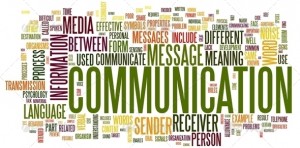Second in a series that explains components of the Leading From Your Strengths profiles
Leading From Your Strengths (LFYS) Profiles are personalized, detailed 20-page reports which accurately describe your individual habitual patterns of behavior, thought, emotion, and communication. They provide you with sophisticated, objective insights and action steps about your unique strengths – data you can use immediately and long-term.
Teams, couples, families, and employers use the profiles in order to work together more effectively. Although the profile questionnaire is quick and simple to complete, it provides sophisticated data in a 20-page report in six sections:
- Your Natural Strengths
- Your Checklist for Communicating
- Your Ideal Environment
- How Others Can Best Lead and Motivate You
- Your Perceptions
- Your Adapted Strengths
This second article explains your report’s Checklists for Communicating and how you can use this data purposefully.
About the Checklist for Communicating Section
Good communication can be a powerful asset in building relationships at work, in the home, in ministry, or on a team,. Yet each of us is wired differently to give and receive information in various ways. These differences in communicating are part of what makes each of us unique.
The Checklist for Communicating section of your profile reveals the ways you best receive information and ways that prevent you from hearing what is shared. Statements listed here are neither inherently good nor inherently bad, but rather simply indicate communication style. Many people find this data not only to be highly accurate, but also enormously practical.
The section is comprised of two parts.
- Checklist for Communicating. This page provides a list of steps others can take when communicating with you. These statements are extremely helpful because they offer active steps, listed as verbs, which outline the best ways you receive information. The data helps those in your circle know positive actions they can take as they interact with you.
- Don’ts on Communication. Your internal make up means it may be more difficult for you to hear information when it is presented in certain ways. This page lists the approaches others should not take when communicating with you, since the tactics listed here raise barriers in your communication filter. When others to know what to avoid, they can intentionally choose other methods.
Ways to Use the Communication Section
Review your lists. As you read each statement in the Checklist for Communicating, make three lists: statements that most strongly describe your preferences, those that describe your preferences well, and those that describe your preferences the least. Use the same process, with the statements in your report’s Don’ts for Communicating to create three lists, in order of your preferences.
Self-understanding allows you to identify situations in which you feel comfortable communicating and to grasp why with others, communication misfires. This exercise gives you clarity.
The data also provides reassurance. Your ways of communicating are not right or wrong, but merely unique to you. Rather than recriminate yourself, now you can cultivate ways of communicating which are best for you. Further, when people around you communicate using other methods, you can appreciate their approach and use it with them, rather than judging it.
Share your preferences. Your lists of preferences are a powerful tool you can share with others in your family, work, or team. For instance, you may operate best when you have opportunities to ask questions. Share that preference with those in your circle so they can allow time and the environment for you to do so.
Understand others’ preferences. Study the Checklists for Communicating for your family members and team members. Ask them to identify their preferences so you can communicate in ways that are best for them and avoid the ways that work less well for them.
Good communication lays the groundwork for healthy relationships. Poor communication can not only inflict wounds, but tear people apart.
Proverbs 12:18 says, “Reckless words pierce like a sword, but the tongue of the wise brings healing” (NIV). The Checklist for Communicating gives you practical information you can use right away to foster wise communication that builds up those in your family, at work, and on your team.
More about Your Profile Report
A Map of Your Profile Report, Part 1: Your Natural Strengths
A Map of Your Profile Report, Part 3: Your Ideal Environment
A Map of Your Profile Report, Part 4: How Others Can Best Lead and Motivate You
A Map of Your Profile Report, Part 5: Your Perceptions
A Map of Your Profile Report, Part 6: Your Adaptive Strengths

